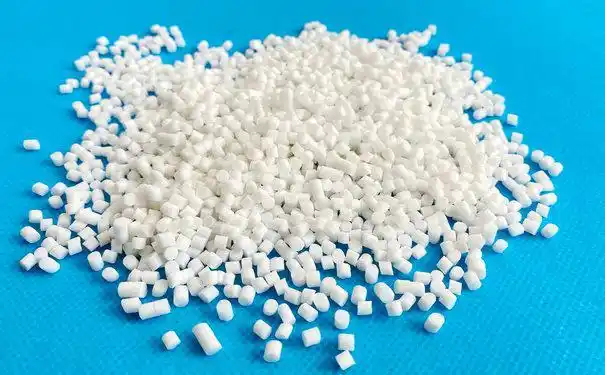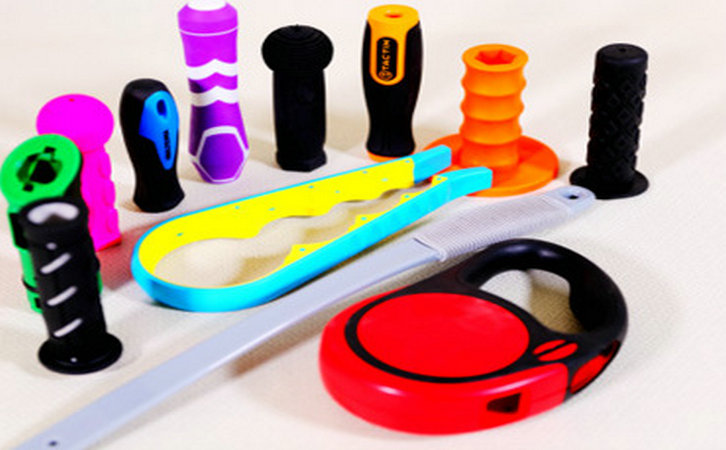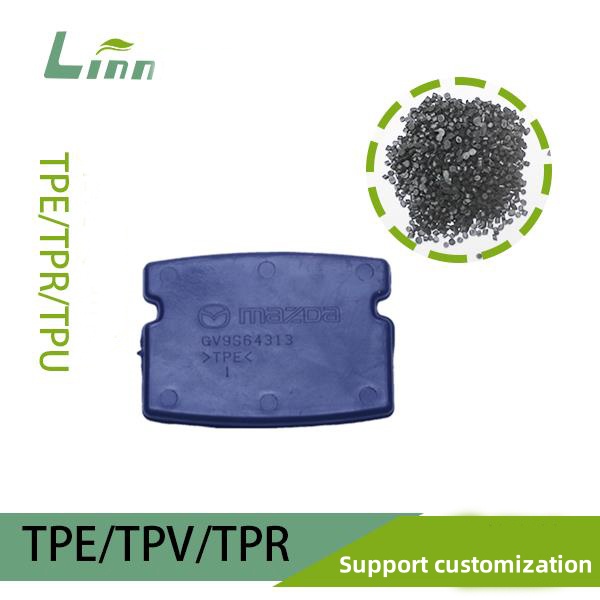Having spent over a decade in the polymer industry, I’ve seen thermoplastic elastomers (TPEs) used in everything from car parts to medical devices, thanks to their flexibility and ease of processing. But one question that pops up frequently, especially from engineers and designers, is whether TPEs can handle continuous exposure to high temperatures, like 150°C. It’s a valid concern—nobody wants a material that softens, degrades, or fails under heat stress. Let me share my insights, drawing from years of hands-on experience, to help you understand what TPEs can and can’t do at such temperatures.

What Are TPEs, and Why Does Heat Resistance Matter?
For those new to TPEs, they’re a unique class of materials that blend the elasticity of rubber with the recyclability of thermoplastics. You can mold them, stretch them, and reuse them, which makes them a favorite in industries like automotive, consumer goods, and healthcare. TPEs come in various types—styrenic block copolymers (SBCs), thermoplastic polyurethanes (TPUs), thermoplastic polyolefins (TPOs), and thermoplastic vulcanizates (TPVs), to name a few—and their properties, including heat resistance, vary widely.
When we talk about continuous exposure to 150°C, we’re asking whether a TPE can maintain its mechanical properties, shape, and functionality over long periods at that temperature. This is critical for applications like under-hood automotive components, industrial seals, or medical devices subjected to sterilization. Let’s break it down and see what’s possible.
The Heat Resistance of TPEs: The Basics
TPEs are thermoplastics, meaning they soften or melt when heated, unlike thermoset rubbers that hold their shape. Most standard TPEs are designed for moderate temperatures, typically up to 80–120°C for continuous use, depending on the type and formulation. At 150°C, you’re pushing the limits of many TPEs, and their performance depends on several factors: the TPE family, additives, and the specific demands of your application.
In my experience, I’ve seen TPEs handle high temperatures in short bursts (like during processing or brief environmental exposure), but continuous exposure at 150°C is a different beast. Let’s explore how different TPE types fare and whether any can meet this challenge.
TPE Types and Their Heat Resistance
Not all TPEs are created equal when it comes to heat. Here’s a look at the major TPE families and their ability to withstand 150°C continuously:
|
TPE Type |
Typical Continuous Heat Resistance |
Performance at 150°C |
Best Use Cases |
|---|---|---|---|
|
Styrenic Block Copolymers (SBCs) |
Up to 70–100°C |
Softens or degrades; not suitable for continuous 150°C. |
Grips, seals, soft-touch parts in moderate conditions. |
|
Thermoplastic Polyurethanes (TPUs) |
Up to 100–120°C |
Some high-performance TPUs may tolerate 150°C briefly, but continuous exposure often leads to degradation. |
Wearable devices, hoses, abrasion-resistant parts. |
|
Thermoplastic Polyolefins (TPOs) |
Up to 100–120°C |
Limited heat resistance; likely to soften or lose properties at 150°C. |
Automotive interiors, flexible panels. |
|
Thermoplastic Vulcanizates (TPVs) |
Up to 120–135°C |
Best standard option; some TPVs can handle 150°C with proper formulation. |
Automotive seals, gaskets, weather-resistant parts. |
|
Specialty TPEs (e.g., Copolyesters, TPAs) |
Up to 140–170°C |
High-performance grades can withstand 150°C continuously with minimal degradation. |
High-heat seals, medical devices, industrial components. |
1. Styrenic Block Copolymers (SBCs)
SBCs, like SBS or SEBS, are common in soft, flexible applications. However, their heat resistance is generally low, topping out at 70–100°C for continuous use. At 150°C, I’ve seen SBCs soften, lose elasticity, or even break down chemically over time. In one project, we tried using an SEBS-based TPE for an automotive seal, but it deformed after prolonged exposure to 130°C. For 150°C, SBCs are usually a no-go unless heavily modified with heat-stabilizing additives, which still may not suffice for continuous use.
2. Thermoplastic Polyurethanes (TPUs)
TPUs are tougher and more abrasion-resistant than SBCs, often used in demanding applications like cables or medical tubing. Standard TPUs can handle 100–120°C continuously, but at 150°C, most will soften or degrade over time. I once worked on a TPU-based hose for an industrial application, and while it held up well at 120°C, extended exposure to 150°C caused cracking and loss of flexibility. Some high-performance TPUs, formulated with heat stabilizers, can push closer to 150°C, but they’re not designed for continuous exposure at that level.

3. Thermoplastic Polyolefins (TPOs)
TPOs, often used in automotive and construction, have similar heat resistance to TPUs (100–120°C). Their olefinic structure makes them prone to softening or melting at 150°C. In a project for an automotive interior panel, we found that a TPO component warped when exposed to 140°C for hours. For continuous 150°C applications, TPOs are rarely suitable.
4. Thermoplastic Vulcanizates (TPVs)
TPVs are a standout in the TPE family because they combine a cross-linked rubber phase with a thermoplastic matrix, offering better heat resistance—up to 120–135°C for many grades. Some specialized TPVs, like those from ExxonMobil or Teknor Apex, are formulated to handle 150°C continuously with minimal loss of properties. I’ve used TPVs in automotive gaskets that performed well under prolonged heat exposure, though we had to select a high-end grade and test it thoroughly.
5. Specialty TPEs (Copolyesters and TPAs)
For applications demanding continuous 150°C resistance, specialty TPEs like thermoplastic copolyesters (COPEs) or polyamide-based TPEs (TPAs) are your best bet. These materials, such as DuPont’s Hytrel or Arkema’s Pebax, can handle 140–170°C in some grades. In a medical device project, we used a COPE-based TPE for a component exposed to 150°C during sterilization cycles, and it maintained its shape and elasticity beautifully. These TPEs are pricier but worth it for high-heat applications.
Factors That Influence TPE Heat Resistance
From my years in the field, I’ve learned that a TPE’s ability to withstand 150°C isn’t just about its base chemistry. Several factors play a role:
Additives and Stabilizers: Heat stabilizers, antioxidants, and fillers can boost a TPE’s thermal resistance. For example, I’ve worked with TPVs that included advanced stabilizers, allowing them to endure 150°C without significant degradation.
Exposure Time: Continuous exposure (24/7 at 150°C) is far more demanding than intermittent exposure. A TPE that handles 150°C for a few hours may fail over weeks or months.
Mechanical Stress: If the TPE is under tension, compression, or flexing at 150°C, it’s more likely to deform or crack. In one project, a TPU seal failed at 140°C under constant pressure, even though it was rated for that temperature in static conditions.
Environmental Factors: Exposure to oxygen, UV, or chemicals at 150°C can accelerate degradation. I’ve seen TPEs perform well in lab tests but struggle in real-world conditions with humidity or oil exposure.
Practical Tips for Using TPEs at 150°C
Based on my experience, here are some actionable steps to ensure success if you’re considering TPEs for high-temperature applications:
Choose the Right TPE: Opt for TPVs or specialty TPEs like COPEs or TPAs designed for high heat. Check with suppliers like DuPont, ExxonMobil, or BASF for grades rated for 150°C continuous use.
Request Technical Data: Always review the material’s heat aging data (e.g., tensile strength retention after 1,000 hours at 150°C). I’ve avoided costly mistakes by insisting on detailed datasheets before selecting a material.
Test in Real Conditions: Lab tests are great, but real-world conditions often differ. In one automotive project, we tested a TPV seal in a simulated engine bay at 150°C with vibration and oil exposure—it held up, but only after tweaking the formulation.
Consider Alternatives: If no TPE meets your needs, look at thermoset rubbers like silicone or fluorosilicone, which can handle 150°C and beyond. I’ve switched to silicone for some high-heat seals when TPEs fell short.
Work with Your Supplier: TPE manufacturers can customize formulations for heat resistance. In a recent project, we collaborated with a supplier to add stabilizers to a TPV, pushing its continuous use limit from 135°C to 150°C.

Real-World Examples from My Work
To give you a sense of what’s possible, let me share a couple of projects I’ve tackled. In one case, we needed a gasket for an automotive sensor exposed to 150°C continuously in an engine compartment. We chose a high-performance TPV with enhanced heat stabilizers. After extensive testing (1,000 hours at 150°C), it retained over 90% of its tensile strength and elasticity, making it a success.
In another project, for a medical device component, we used a copolyester TPE rated for 150°C during steam sterilization cycles. The part maintained its flexibility and seal integrity after repeated exposures, proving that specialty TPEs can shine in high-heat scenarios. However, I’ve also seen failures—like a TPU cable jacket that softened and cracked at 150°C after just a week of continuous use, underscoring the importance of material selection.
Limitations and When TPEs Might Not Work
Despite their versatility, TPEs have limits at 150°C:
Standard TPEs Fail: Most SBCs, TPUs, and TPOs will soften, degrade, or lose mechanical properties over time at 150°C.
Cost vs. Performance: High-heat TPEs like COPEs or specialized TPVs are expensive. For budget-conscious projects, thermoset rubbers might be more cost-effective.
Long-Term Degradation: Even heat-resistant TPEs may lose properties after months at 150°C, especially under stress or in harsh environments.
Processing Challenges: High-heat TPEs often require precise molding conditions, which can complicate manufacturing.
If your application demands continuous 150°C exposure with no room for compromise, you might need to explore alternatives like silicone, fluoropolymers, or metal components.
Emerging Trends in High-Heat TPEs
The polymer world is always advancing, and I’m excited about new developments in high-heat TPEs. Researchers are working on nanocomposite TPEs with enhanced thermal stability and bio-based TPEs that maintain performance at higher temperatures. These innovations could make 150°C applications more accessible in the future. For now, sticking with proven high-performance grades is your safest bet.

Final Thoughts
So, can TPEs withstand continuous exposure to 150°C? Yes, but only specific types—like high-performance TPVs or specialty TPEs such as copolyesters—are up to the task. Standard TPEs, like SBCs or most TPUs, will struggle, but with the right material selection, additives, and testing, you can achieve reliable performance. My advice? Work closely with your supplier, test rigorously, and consider the full range of environmental and mechanical factors your TPE will face.
Having navigated countless TPE projects, I’ve seen firsthand how the right material choice can turn a challenging design into a success. If you’re exploring TPEs for a high-heat application, take the time to dig into the details—it’ll pay off in the long run.
Related Questions and Answers
Q: Are there TPEs that can handle temperatures above 150°C continuously?
A: Yes, some specialty TPEs, like certain copolyesters or polyamide-based TPEs, can handle up to 170°C or more. Check with suppliers for grades with proven heat-aging data.
Q: How do I know if a TPE is suitable for 150°C?
A: Review the material’s technical datasheet for continuous use temperature ratings and heat-aging performance. Conduct real-world tests to confirm suitability.
Q: Can additives improve a TPE’s heat resistance?
A: Absolutely. Heat stabilizers and antioxidants can extend a TPE’s temperature range, but they may not make a low-heat TPE suitable for 150°C continuous use.
Q: What’s a cost-effective alternative to TPE for 150°C applications?
A: Silicone or fluorosilicone rubbers are excellent for high heat and often more affordable than specialty TPEs. They’re worth considering if TPEs don’t meet your needs.





